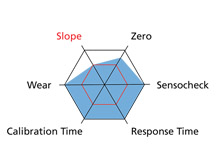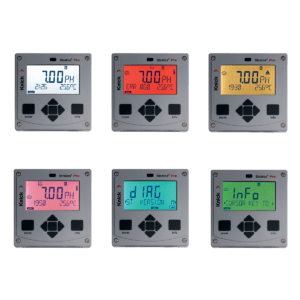How many pH sensors did we throw away last month?
Remember when it was the screech under the hood or the burning oil smell that told you something was wrong with your car? What did we do before our cars told us it was time for service? We didn’t just get rid of our car and buy a new one, we brought it to the mechanic for evaluation and repair.
Today, we have clear diagnostics on our car’s dashboard that pinpoint the problem and indicate when it’s time for service. The same benefit is available with Memosens smart pH sensor technology. So, why are we throwing away pH sensors without diagnosing the problem?
In my years visiting end-users of pH sensors I’ve found that the most common maintenance technique used for troubleshooting is to simply throw the sensor away and replace it with a new one. That’s right, hundreds of dollars thrown in the trash each time a sensor isn’t functioning as expected. Thousands of dollars a year! Why?
Digital Sensor Diagnostics
Maybe it’s because of a time crunch with the process shut down due to the measurement being out of service. Perhaps it’s because the sensor is in a hazardous environment or difficult to reach location. Possibly it’s because it’s 3 am, or 100ºF, or storming? Or maybe, it’s just easier than going through the required diagnosis. I am absolutely sure that these are all reasons why pH sensors are trashed. However, I think the root cause is even more simple. Most technicians have no way of knowing what’s wrong with the sensor. It’s very difficult to fix a problem you can’t define.
With the introduction of Memosens digital sensing technology has come to a much-needed solution to this problem. “Smart” sensors now provide feedback regarding their health. There are portable meters and transmitters on the market that offer an intuitive user interface that provides easy to understand information. The technician is now able to perform a quick diagnosis. They can determine if a sensor is working properly, should be replaced, or just cleaned and re-calibrated.
Diagnostics Tools
The Knick Portavo portable meter can be used both in the field and in the shop or lab to provide sensor diagnostics. It provides an evaluation of the sensor performance during calibration (zero, slope, and response time) as well as sensor wear and electronics (Sensocheck). Here is a screenshot of the Sensor Network Diagram:

If the sensor is good for use in the field, the hexagon will remain blue. As one of the measured values begins to degrade, the blue will move in toward the smaller red hexagon in the middle. Once it hits the red, it’s either time to re-calibrate or to replace the sensor. No more need to be an expert in pH measurement!
Stratos and Protos series transmitters, from Knick, provide an easy to understand user interface in the field. The Stratos transmitter changes color based on the condition of the sensor.

Summary
Because digital sensors now allow offline calibration, there are no excuses for operators to throw sensors without properly evaluating. Rather than performing diagnostics and calibrations in the field, they can do it all in a controlled environment. Most importantly, you can do this at a time of your choosing. The only maintenance in the field is to swap a pre-calibrated and validated sensor for the troublesome one in the process.
Don’t wait for the screech and the smoke to tell you there is a problem, Memosens smart digital technology allows you to be the mechanic.
Read More
This is the fifth in a series of five posts that are designed to best explain the features and benefits of Memosens:
- How can a toothbrush make your pH measurement more reliable? – The Inductive Connection
- It’s probably the cable! – Analog sensors and their inherent electrical issues
- It’s 3 am and I’m out calibrating a pH sensor! – The portable meter and the benefits of off-line calibration
- How accurate is my pH sensor? You should be asking, how accurate is my calibration procedure? – Helpful hints for a more accurate calibration
- How many pH sensors did we throw away last month? – The value of enhanced sensor diagnostics
